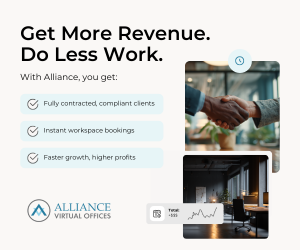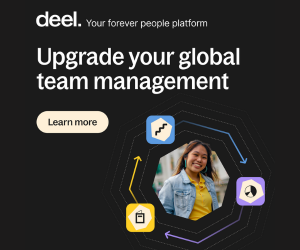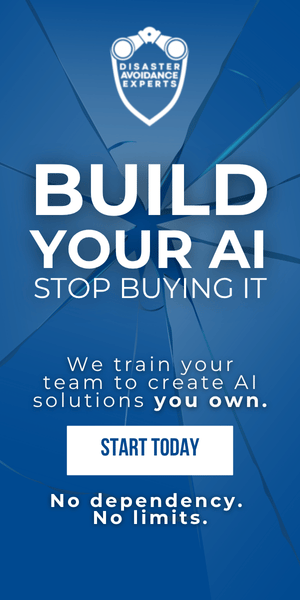- In 2025, AI and automation will be deeply integrated into workplaces, significantly improving work-life balance by reducing the burden of repetitive tasks and giving employees greater control over their schedules.
- The continued evolution of remote work technologies, such as video conferencing tools, will enable a more flexible approach to managing professional responsibilities alongside personal commitments.
- AI-powered wearable wellness devices, wellbeing apps, and telehealth services will help reduce work-related stress — enhancing overall work-life balance.
The future of work is not just about getting more done — it’s about finding a balance that keeps us sane, healthy, and happy.
Finding that happy work-life balance has been a dream for workers for decades. Are we finally at a point where technology can enable the work-life balance workers have been craving?
As 2025 begins, AI and automation are poised to reshape how we work and live, offering solutions that promise to streamline tasks, boost productivity, and give employees more control over their time.
But with these advancements will come new challenges: can we really avoid burnout in a world where work never stops?
The Deep Impact Of Increasing AI Integration
Organizations are now preparing for a more digitally-reliant workforce, with technology playing a vital role in supporting flexible work arrangements that meet the needs of modern employees.
At the forefront of this transformation is artificial intelligence (AI). AI-powered solutions are becoming integral to business strategies, streamlining workflows and improving decision-making.
Additionally, the emergence of agentic AI — systems independently capable of solving complex problems — will revolutionize multiple sectors.
While technology becomes increasingly embedded in our daily lives, it also blurs the boundaries between work and personal time.
The widespread use of smartphones, laptops, and digital communication platforms has extended the workday beyond traditional office hours. The rise of the gig economy and the trend of juggling multiple jobs further complicate the balance between work and personal life.
Although technology can sometimes challenge work-life balance, workers are increasingly leveraging tech-driven tools to manage tasks, prioritize activities, and reduce information overload, helping them maintain a healthier balance.
Simple strategies, such as muting work notifications, are emerging as key safeguards against burnout and stress. Platforms such as 15Five and SurveyMonkey can track employee wellbeing, providing organizations with data to make informed decisions that improve the work environment and boost employee satisfaction.
What Could Change in 2025?
In 2025, technological advancements will continue to shape the future of work. Technology’s role in enhancing collaboration and enabling more flexible work environments will directly support better work-life balance.
However, achieving success will depend on aligning the pursuit of profitability with developing human-centric work environments that prioritize wellbeing.
Technological advancements will significantly impact the balance between work and personal life.
Below are five key areas where these advancements will be particularly impactful:
1. Time Management and Productivity
By 2025, AI will become increasingly integrated into both work and home environments, with mass adoption of AI and robotics driving a phenomenon known as hyperautomation.
This will transform the way tasks are completed, resulting in time savings and greater efficiency.
Automation tools such as Zapier and IFTTT will become widely used, helping to reduce the burden of repetitive tasks, streamline communication, and boost overall productivity.
These technologies will enable employees to focus on more innovative work or personal activities, enhancing work-life balance by giving them more control over their time.
AI and automation will continue to optimize workflows and resource allocation, particularly in hybrid work environments. Nirit Cohen, a future-of-work and management expert, recently discussed in an Allwork.Space Future of Work Podcast episode how these technologies can significantly improve work-life balance.
By automating routine tasks and enhancing productivity, Cohen points out that AI allows employees to work less, prioritize mental health, and have more time for personal pursuits.
AI-powered productivity platforms such as Monday.com, Trello, and Asana already use algorithms to streamline workflows, reduce workloads, and give employees greater control over their schedules and deadlines.
There will be an increased use of scheduling apps to help workers organize their day around personal commitments, ensuring that work does not interfere with personal time.
Looking farther ahead, generative AI-powered virtual assistants and digital twins will further improve work-life balance by supporting workers with routine tasks.
At home, advancements in network connectivity, smart devices, and digitally enhanced living environments will create more efficient, convenient spaces, enabling individuals to manage their professional and personal responsibilities while reducing stress and time constraints.
2. Remote Work Capabilities
In 2025, integrating AI into hybrid and remote work models will create a more flexible and personalized work experience, allowing employees to manage their time more efficiently and prioritize work-life balance.
Remote work has transformed the modern workplace, providing employees — though with some disparities across different demographics and sectors — greater flexibility and control over their work-life balance.
Once considered a perk, remote work has become an expectation for many, allowing employees to tailor their work environment to their unique needs and promote a healthier work-life balance.
Advances in technology, including cloud-based platforms and video conferencing tools such as Zoom, have made it easier for employees to work from virtually anywhere, eliminating long commutes and enabling individuals to balance personal responsibilities alongside their work commitments more effectively.
The rise of the gig economy, freelancing, and digital nomadism reflects AI’s capability to give workers greater control over their schedules while helping to maintain boundaries between work and personal life.
3. Enhanced Communication and Collaboration
In 2025, the continued advancement of communication tools, cloud services, and AI integration will improve collaboration and significantly enhance work-life balance by offering employees greater flexibility, efficiency, and control over their professional and personal lives.
Tools such as Slack, Microsoft Teams, and Zoom will remain central, facilitating real-time messaging and video conferencing.
These platforms enable seamless communication, allowing teams to collaborate effectively without being physically together. By reducing reliance on lengthy meetings and excessive email chains, these technologies streamline decision-making and problem-solving processes, ultimately freeing up more time for employees to focus on personal activities, thus improving overall work-life balance.
Cloud-based services, including Google Drive and Microsoft OneDrive, will continue to enhance collaboration by enabling multiple users to work on documents simultaneously, ensuring all team members can access the most up-to-date information.
These services reduce email back-and-forth, making workflows more efficient and promoting seamless collaboration. Shared workspaces empower teams to work together, regardless of location — offering greater flexibility in work hours and helping employees better balance their work and personal responsibilities.
AI-powered features integrated into these digital communication tools — such as automatic transcription, “smart” meeting summaries, and real-time project updates — will significantly enhance virtual collaboration in 2025.
These AI-driven innovations will reduce the effort required to stay aligned with project developments, ensuring that employees have quick access to critical information without needing constant check-ins.
By streamlining communication and reducing stress, these technologies will boost efficiency and create more free time for employees, allowing them to enjoy a healthier work-life balance.
Advanced collaboration tools will also enable a more personalized and flexible work experience, making it easier for employees to manage work commitments while having more time for personal pursuits.
4. Health and Wellness Support
In 2025, technology will be integral to the modern workplace’s approach to wellbeing, with health and wellness initiatives playing a key role in empowering employees to manage their professional and personal lives more effectively.
Technological advancements will continue to remove barriers to mental health care and make tailored treatments more accessible.
Here are some ways technology can support health and wellness in the workplace, contributing to a better work-life balance:
-
Mental Health Monitoring
AI-integrated wellness platforms can detect signs of burnout or stress, recommending timely interventions to help employees maintain a healthier work-life balance.
-
Wearable Technology
AI-powered wearable devices track health, encourage physical activity, and promote regular breaks, enhancing overall wellbeing. These devices provide real-time health data to customize wellness programs.
-
Wellness Apps
Numerous health and wellness apps promote physical and mental wellbeing. These include fitness tracking apps, meditation and mindfulness apps, and virtual fitness classes, helping employees manage stress and stay active.
-
Telehealth Services
Remote healthcare services provide employees with easy access to healthcare professionals from the comfort of their homes, reducing the time and stress associated with in-person visits.
-
Virtual Social Interactions
Technology enables virtual team-building and social interactions, improving overall job satisfaction and contributing to a better sense of work-life balance.
AI-driven solutions, including wearables and wellness apps, provide tailored support for employees’ physical and mental health, creating a healthier work-life balance.
In Japan, for example, AI tools track and manage mental health, addressing the overwork crisis and preventing karoshi (death by overwork). These technologies monitor stress levels and offer personalized interventions, such as sleep therapy programs or access to mental health professionals.
However, technology for wellbeing can be a double-edged sword.
While it offers significant benefits, increased reliance on workplace technology can also negatively impact mental health and wellbeing.
Excessive screen time, constant connectivity, and the pressure to always be available can lead to burnout, stress, and a reduced quality of life, potentially undermining the pursuit of improved work-life balance.
5. Strategic Boundary Management
Boundary management strategies are essential for maintaining a work-life balance.
In 2025, these strategies will become increasingly tech-enabled, helping individuals manage the overlap and conflict between professional and personal responsibilities.
Technology will facilitate flexible scheduling and work arrangements — such as job sharing, compressed workweeks, and flextime — which improve work-life balance by allowing employees to adjust their schedules to meet personal commitments.
Workers will become more familiar with the concept of technostress. The pervasive nature of technology can blur the lines between work and personal time, making it harder to maintain a healthy balance.
Technostress, characterized by feelings of being overwhelmed by technological demands, can erode work-life balance and negatively impact wellbeing.
Cheryl Swirnow, founder of CMS Consultants, emphasizes the need to balance technology and human connection, advocating for programs that combine technology with personal development.
In response to constant connectivity challenges, the concept of digital detox will gain traction in 2025. Digital detox involves intentional breaks from digital devices and online communication to restore balance and reduce technostress.
Studies suggest that digital detox interventions can effectively mitigate the adverse impacts of technology on work-life balance by promoting psychological detachment from work and enhancing overall wellbeing.
In 2025, organizational policies and culture will have more impact on the connection between technology and work-life balance.
Employers will increasingly acknowledge the significance of work-life balance and implement policies to support employee wellbeing while minimizing the harmful effects of technology on their personal lives.
Strategies using technology to reduce technostress and encourage digital detox practices will thus become more widespread. Data-driven decision-making will also become more prominent.
AI will use data to understand employee engagement patterns and identify potential risks, enabling organizations to intervene and prevent stressors that could disrupt work-life balance proactively.
Japan’s approach to addressing its longstanding work-life balance crisis relating to the culture of overwork and karoshi showcases the role of technology in promoting a healthier work environment.
The Stress Check Program, integrated with AI technology, effectively monitors stress levels and tracks excessive overtime. This technology can help enforce overtime caps and provide improved support for employees.
These technologies enable people to feel better and improve their relationships with work, facilitating a healthier balance between their professional and personal lives.


 Dr. Gleb Tsipursky – The Office Whisperer
Dr. Gleb Tsipursky – The Office Whisperer Nirit Cohen – WorkFutures
Nirit Cohen – WorkFutures Angela Howard – Culture Expert
Angela Howard – Culture Expert Drew Jones – Design & Innovation
Drew Jones – Design & Innovation Jonathan Price – CRE & Flex Expert
Jonathan Price – CRE & Flex Expert













